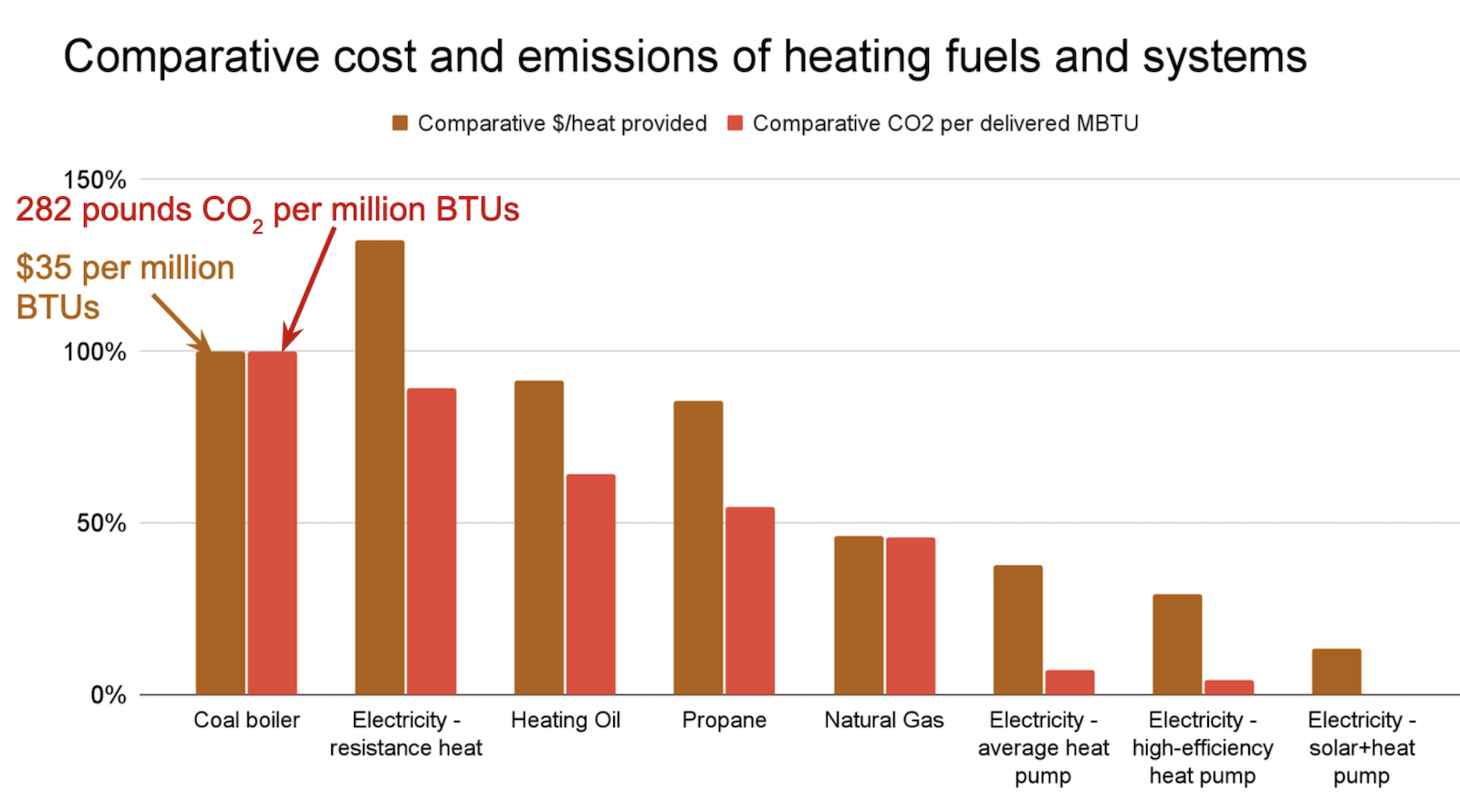Sign up for daily news updates from CleanTechnica on email. Or follow us on Google News!
On the way decarbonizing my home, a heated love affair with propane went up in flames.
At the start, seeking warmth and comfort, the fuel’s seemingly slim carbon footprint was infatuating. Propane came in those big cuddly tanks one sees next to romantic mountain cabins, or those cute little UFO-looking ones that tuck-in beneath barbecues. The whole package was alluring.
I was young, and not attracted to dirtier electricity. Then sixteen years passed and carbon-free power came to town. My gaze began to wander. With new conviction, I embraced a home electrification and zero net energy project, saving a pile of money and a mountain of carbon along the way. But, still, the propane breakup was tough.
It turns out I wasn’t alone. Propane looms large in the U.S. energy and climate picture. In areas beyond the reach of natural gas pipelines — particularly those with low population densities or rugged landscapes — propane is often the dominant fuel for running furnaces, water heaters, stoves, and clothes dryers.
This funny fuel is one of the best-kept (energy) secrets. All told, Americans inhale almost 10 billion gallons of the stuff each year, exhaling the greenhouse emissions of 12 million cars. They spend about $22 billion for the privilege. Not a cheap date.
Just over 11 million U.S. households (9 percent) consume half the nation’s propane, and that’s not including the 40 million more that use the fuel only for grilling. Half of the core users have income under $60,000 per year. Those heating with propane spend an average of $1,185 annually on the fuel, or 44% of their total energy bills. In the Midwest, propane represents 6% of home energy use — jumping to 25% in poorer rural areas. Some have the option to switch to cheaper natural gas, but for most, there is no pipeline in sight.
Another 25% of the fuel is used in 675,000 commercial buildings spanning a whopping 10 billion square feet of floor area as of 2018. The remaining consumption is spread across industry, agriculture, and transportation.
All of this propane combustion spews about 62 million tons of carbon dioxide each year. Twenty three states have total carbon footprints less than this.
My relationship with propane was plagued with infidelities and subterfuges. I saw propane join their much bigger brothers and sisters in the fossil fuel industry to deflect negative attention. Some propane sellers hurl number salads at defenseless consumers, crowing that the fuel is “green” and better than its nearest competitors — gasoline and natural gas — and insisting that it is “not toxic or damaging to the environment.” He said; she said. According to investigative reporting by the New York Times, the industry-funded Propane Education and Research Council runs a PR campaign with “provocative anti-electrification messaging,” disparaging heat pumps and other serious climate solutions. They budgeted $13 million on the effort in 2023 — ironically funded by a tax on propane users. Think about this next time you grill a hot dog: The Space Gal has been launched to bash electric school buses in favor of propane, disingenuously claiming propane is “near-zero” carbon emissions. And Emily, please don’t invite me up to your Wonder Lab to see your etchings of propane school buses. One serious study found that electric school buses actually cut emissions in half on average, compared to propane buses. So, I’m not falling for propane this time.


Propane had expensive taste, and was messy at home. In reality, based on average U.S. conditions (your mileage may vary), propane tends to be substantially more expensive and polluting than most alternatives. I checked the receipts. In terms of how much fuel it takes to deliver a consistent amount of heat to a home, propane emits 19% more carbon dioxide than natural gas, and costs 86% more. However, compared to a top-efficiency electric heat pump, propane emits a whopping 12-times percent more, costing 1.2-times more. When powering that heat pump with rooftop solar under good conditions, propane costs a bank-breaking 6-times percent more, while solar of course eliminates the carbon footprint altogether. These ratios are similar for businesses.
There were other irritants in the relationship. The tank ran dry more than once and in my time of need calls for support often went answered. I did all the cooking only to be exposed to higher nitrogen dioxide pollution indoors than outdoors, as well as known carcinogen benzene among other combustion products. And there’s the extra cost and fuss of modifying water heaters, cooktops, and other equipment designed originally for natural gas operation. On top of that, propane has the unfortunate habit of being heavier than air, meaning that if leaked, the fuel can pool at low points, creating an explosion hazard — certainly a rare, but devastating, event. Stationary tanks can destroy buildings, and propane-carrying trucks can explode on highways. Too much drama.
On top of it all, propane had so many double standards. Delivery companies are smugly situated well outside the benevolent state-level regulatory bubble that has delivered billions of dollars to energy efficiency programs to customers served by gas and electric utilities, with $7.7 billion invested in 2021 alone. These days, electric utilities also make massive investments in carbon-free power. The underlying progressive policies are driven in large part by regulations that do not apply to the propane industry, which instead focuses on incentives to prompt customers to just use more, and seeks out subsidies (while criticizing renewable sources for receiving them). At least propane users can avail themselves of state and federal tax credits for solar and energy efficiency. Although, my visits to the websites of the top-10 providers nationally revealed no mention of these and only two had even generic information on ways to save energy.
The flame is gone, and the fire is out. And not just for me. With climate change and soaring energy costs afflicting so many people and businesses, emissions cuts are being sought everywhere. Local and federal policymakers can capture missed opportunities by more wholeheartedly addressing propane use.
In the end, propane was just a pain. Fortunately, there are more (carbon-neutral) fish in the sea.

By Evan Mills, Ph.D.
Evan Mills, Ph.D. is an affiliate and retired senior scientist at the U.S. Department of Energy’s Lawrence Berkeley National Laboratory and a research affiliate at the University of California at Berkeley’s Energy and Resources Group. He served as a lead author on global assessments under the Nobel-prize winning Intergovernmental Panel on Climate Change (IPCC).
Have a tip for CleanTechnica? Want to advertise? Want to suggest a guest for our CleanTech Talk podcast? Contact us here.
Latest CleanTechnica.TV Videos
CleanTechnica uses affiliate links. See our policy here.
CleanTechnica’s Comment Policy





